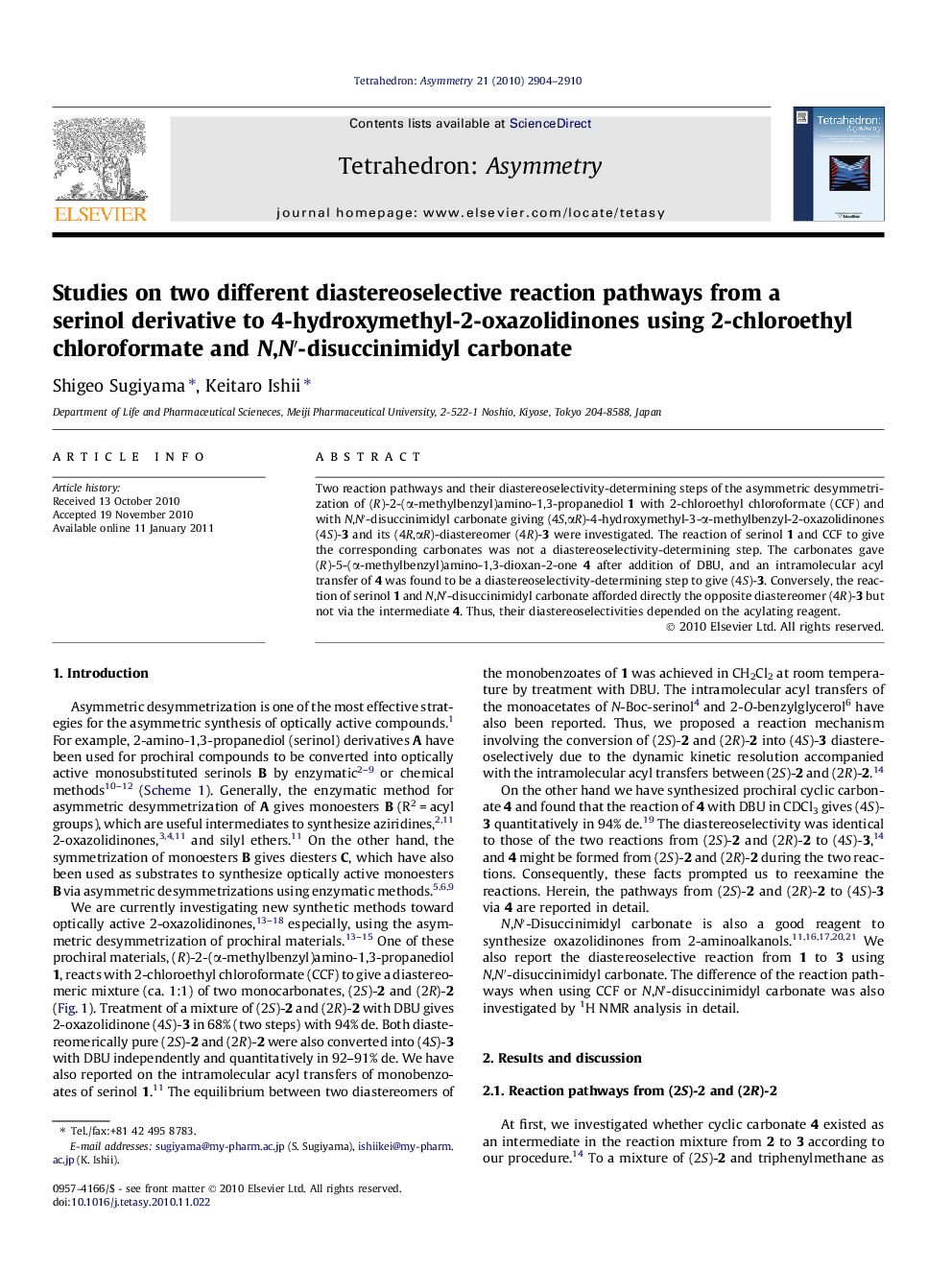| Article ID | Journal | Published Year | Pages | File Type |
|---|---|---|---|---|
| 10579543 | Tetrahedron: Asymmetry | 2010 | 7 Pages |
Abstract
Two reaction pathways and their diastereoselectivity-determining steps of the asymmetric desymmetrization of (R)-2-(α-methylbenzyl)amino-1,3-propanediol 1 with 2-chloroethyl chloroformate (CCF) and with N,Nâ²-disuccinimidyl carbonate giving (4S,αR)-4-hydroxymethyl-3-α-methylbenzyl-2-oxazolidinones (4S)-3 and its (4R,αR)-diastereomer (4R)-3 were investigated. The reaction of serinol 1 and CCF to give the corresponding carbonates was not a diastereoselectivity-determining step. The carbonates gave (R)-5-(α-methylbenzyl)amino-1,3-dioxan-2-one 4 after addition of DBU, and an intramolecular acyl transfer of 4 was found to be a diastereoselectivity-determining step to give (4S)-3. Conversely, the reaction of serinol 1 and N,Nâ²-disuccinimidyl carbonate afforded directly the opposite diastereomer (4R)-3 but not via the intermediate 4. Thus, their diastereoselectivities depended on the acylating reagent.
Related Topics
Physical Sciences and Engineering
Chemistry
Inorganic Chemistry
Authors
Shigeo Sugiyama, Keitaro Ishii,
